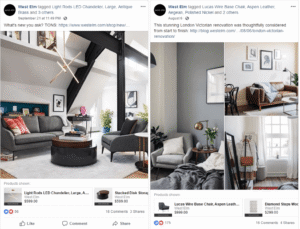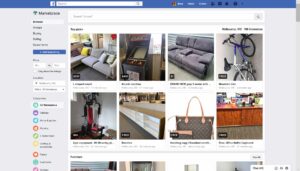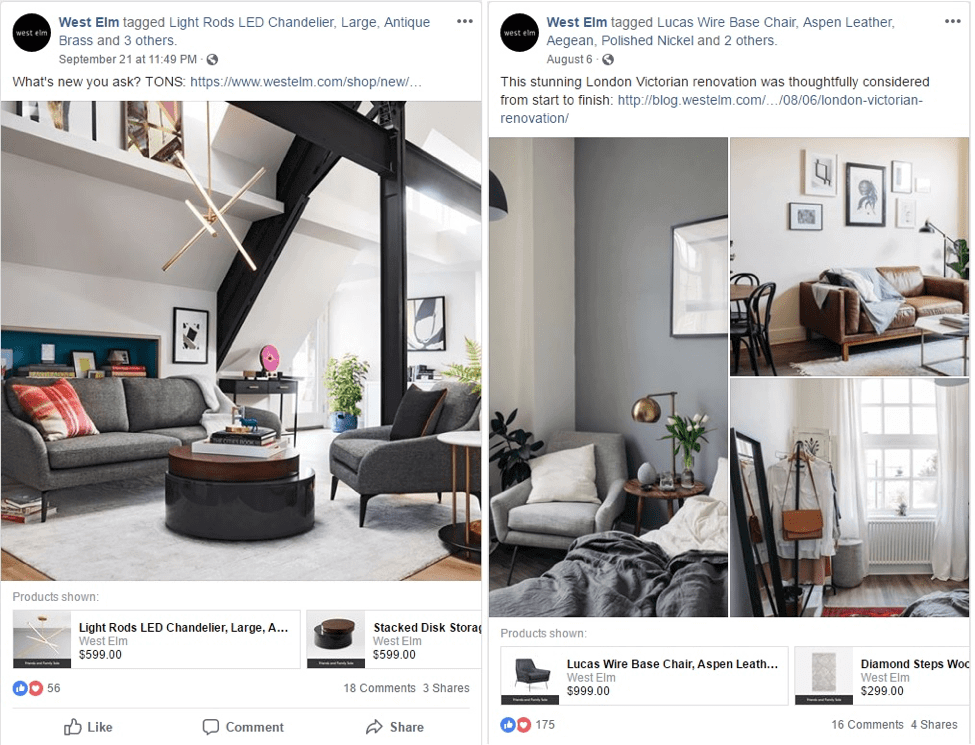The online marketplace world has changed the way people buy and sell goods. From second-hand furniture to new electronics, from handmade crafts to vintage clothing, marketplaces have become the go-to platforms for individuals and businesses alike. Whether you’re clearing out clutter at home, searching for great deals nearby, or trying to launch a small side business, marketplace apps offer opportunities that physical stores and traditional classifieds could never match.
But just because marketplace apps are convenient doesn’t mean they are risk-free. Before you buy or sell on any marketplace app—be it Facebook Marketplace, Craigslist, OfferUp, eBay, or similar platforms—there are important things you need to know. This guide will walk you through everything: how these apps work, how to protect yourself from scams, how to present yourself as a trustworthy buyer or seller, and the strategies that can help you get the most value out of your transactions.
What Is a Marketplace App?
A marketplace app is a digital platform that connects buyers and sellers directly. Unlike a traditional online store where you purchase from a retailer, marketplace apps let individuals or businesses list their items for sale and interact with potential buyers.
Popular examples include:

-
Facebook Marketplace – integrated into Facebook, allowing you to buy and sell within your community.
-
eBay – an international platform where you can bid or buy items outright.
-
OfferUp and Letgo (merged as OfferUp) – focused on local selling and buying.
-
Craigslist – one of the earliest online classifieds still used worldwide.
-
Poshmark, Depop, and Mercari – marketplace apps specializing in clothing, fashion, and lifestyle goods.
These apps function as digital bazaars. Sellers upload product images, descriptions, and prices, while buyers browse, compare, and contact sellers to make purchases. Transactions may happen online (via integrated payments) or in person (via cash or mobile transfers).
Why People Love Marketplace Apps
Marketplace apps have become incredibly popular for several reasons:
-
Local Convenience – Many apps focus on local listings, so you can find items close to your location, often avoiding shipping costs.
-
Affordability – Second-hand and discounted items are often much cheaper than retail prices.
-
Variety – From cars to vintage furniture, you can find almost anything.
-
Eco-Friendly – Buying and selling used goods reduces waste and promotes recycling.
-
Entrepreneurial Opportunities – Sellers can use these platforms to start side hustles or test out business ideas.
But with convenience comes responsibility. Before you dive into marketplace transactions, there are crucial things you must consider.
Things to Know Before Buying on Marketplace Apps
1. Do Your Homework on the Item
Never assume an item is as described. Research the product online first. For example:
-
Check the retail price. Is the “deal” really a bargain, or is it overpriced?
-
Look for reviews to understand quality and common issues.
-
Verify model numbers for electronics or appliances.
2. Evaluate the Seller’s Profile
Many marketplace apps show seller ratings, transaction history, or at least a profile linked to social accounts. Red flags include:
-
A newly created profile with little activity.
-
No profile picture or suspiciously generic photos.
-
Reviews mentioning scams, late deliveries, or poor communication.
3. Communicate Clearly
Before agreeing to buy:
-
Ask direct questions about the condition of the item.
-
Request additional photos or even a short video showing the product in use.
-
Clarify if the item is new, used, refurbished, or damaged.
4. Avoid Too-Good-To-Be-True Deals
If an iPhone 15 is being sold for a fraction of its actual value, it’s likely a scam. Fraudsters lure buyers with unbeatable prices. Trust your instincts—when in doubt, walk away.
5. Arrange Safe Transactions
-
Meet in public spaces such as malls, police station parking lots, or coffee shops.
-
If buying expensive items (like electronics), test them before paying.
-
Use secure payment methods. Some apps offer buyer protection when you pay within the app. Avoid wiring money or paying through untraceable services.
Things to Know Before Selling on Marketplace Apps
Selling online might seem simple—snap a photo, post it, and wait for buyers. But successful selling requires planning and awareness.
1. Present Items Professionally
-
Take clear, well-lit photos from multiple angles.
-
Write detailed descriptions, including brand, size, color, dimensions, and condition.
-
Be honest—highlight flaws instead of hiding them. Transparency builds trust.
2. Set the Right Price
-
Research similar listings to find competitive pricing.
-
Be prepared to negotiate. Many buyers expect some wiggle room.
-
If you’re not in a rush, start higher and lower the price over time if it doesn’t sell.
3. Communicate Responsively
-
Reply to buyer inquiries quickly.
-
Be polite and professional. A friendly tone helps you close deals faster.
-
Avoid wasting time with unserious buyers—ask for confirmation before setting a meeting.
4. Be Aware of Scams
Common scams sellers face include:
-
Overpayment scams – A buyer sends you more money “by accident” and asks you to refund the difference. The original payment is later reversed, leaving you at a loss.
-
Fake payment confirmations – Fraudsters send fake receipts or screenshots claiming they paid. Always verify funds have cleared before handing over the item.
-
Shipping fraud – A buyer may request you ship through unusual services. Stick to app-approved methods.
5. Safety First When Meeting Buyers
-
Always meet in public places during daylight.
-
Bring a friend if selling expensive items.
-
For home deliveries, never invite strangers into your home—conduct exchanges outside.

Marketplace Scams to Watch Out For
Unfortunately, scammers are everywhere online. Here are the most common fraud tactics:
-
Phishing Links – Fraudsters send fake links that mimic official payment systems. Never click links outside the app.
-
Fake Escrow Services – Scammers may suggest holding money in a “secure” service. Most of these are fake.
-
Stolen Items – If a deal is unusually cheap, the item might be stolen property.
-
Advance Payment Requests – Never pay before seeing the item unless using the app’s secure checkout with protection.
-
Rental/Job Scams – Some marketplace apps list fake housing or job opportunities to collect deposits.
Protect yourself by staying on the official app, using trusted payment methods, and walking away when something feels off.
How to Stay Safe on Marketplace Apps
-
Use Built-in Payment Systems: Facebook Marketplace and eBay offer payment protection for transactions completed through their platform.
-
Trust Your Instincts: If the conversation feels strange, stop immediately.
-
Never Share Personal Info: Don’t send copies of your ID, home address, or banking details.
-
Check for Verified Badges: Some apps verify seller identities. Favor verified sellers when possible.
-
Keep Communication Within the App: Scammers often try to move conversations to WhatsApp, email, or text. Stay inside the app where you’re protected.
Maximizing Your Buying Experience
Tips for Buyers:
-
Set Alerts for Items You Want – Many apps allow you to save searches and get notified when new items appear.
-
Negotiate Smartly – Always be polite when bargaining. For example, offer 10–20% less than the asking price, leaving room for compromise.
-
Check Timing – Listings that have been up for weeks may mean sellers are eager to negotiate.
-
Bundle Purchases – If a seller has multiple items you want, ask for a bulk discount.
Maximizing Your Selling Experience
Tips for Sellers:
-
Post at the Right Time – Listings often get more visibility in the evenings or weekends when buyers are most active.
-
Relist Unsold Items – If your product isn’t selling, refresh the listing with new photos or updated descriptions.
-
Offer Delivery for a Fee – Many buyers appreciate delivery, especially for bulky items like furniture.
-
Build a Good Reputation – Positive reviews will make future sales easier. Always deliver what you promise.
Benefits and Downsides of Marketplace Apps
Benefits:
-
Accessibility – Anyone can join and start buying/selling.
-
Low to No Fees – Some apps (like Facebook Marketplace) have no listing fees for most categories.
-
Community Focus – Local buying/selling reduces shipping costs and supports neighborhood connections.
Downsides:
-
Scams and Fraud – Without caution, you risk losing money.
-
No Guarantees – Unlike big e-commerce sites, there’s limited buyer protection.
-
Time Investment – Negotiations and meetups can be time-consuming.
-
Inconsistent Quality – You’re relying on individuals, so product conditions vary.
The Future of Marketplace Apps
Marketplace apps continue to evolve. Here’s what to expect in the coming years:
-
More AI-driven recommendations – Apps will suggest items based on browsing and buying habits.
-
Enhanced safety features – Verification, escrow services, and in-app messaging improvements will reduce fraud.
-
Integration with delivery/logistics – More apps may partner with courier services for seamless delivery.
-
Expansion beyond goods – Services like rentals, freelance work, and experiences will grow within marketplaces.
Final Thoughts
Marketplace apps have transformed how people buy and sell, creating a fast, affordable, and accessible way to exchange goods. But like any marketplace, risks exist. Scams, fake listings, and unsafe transactions can ruin your experience if you’re not cautious.
The golden rule is simple: be informed, be cautious, and use common sense. Whether you’re a buyer hunting for deals or a seller hoping to earn extra income, marketplace apps can be a powerful tool when used wisely.
Before you dive in, remember:
-
Always research items and sellers.
-
Never rush transactions.
-
Prioritize safety—meet in public, pay securely, and trust your instincts.
If you follow these guidelines, you’ll not only avoid the pitfalls but also maximize the benefits of buying and selling on marketplace apps.
